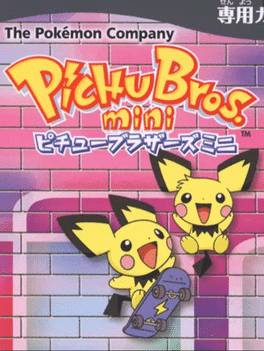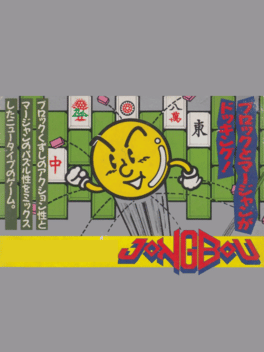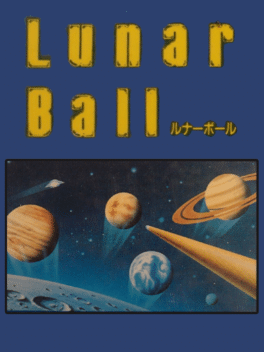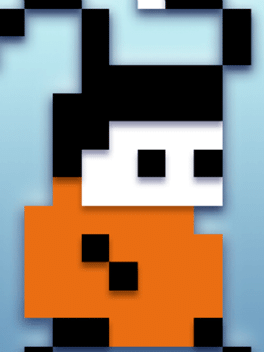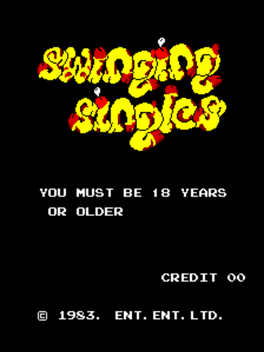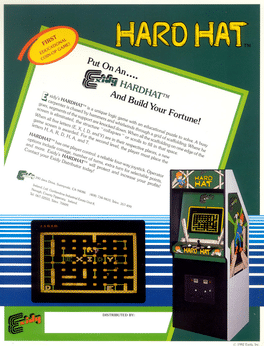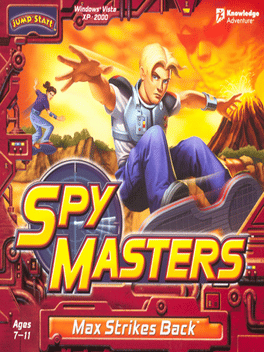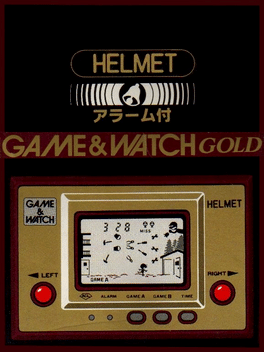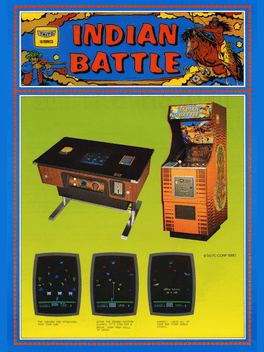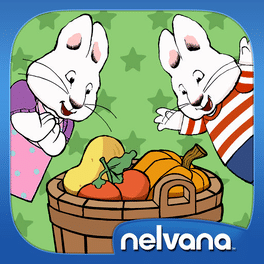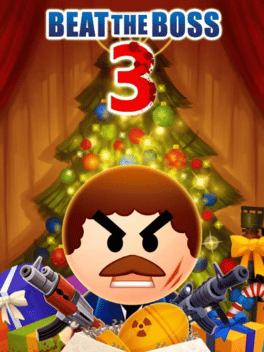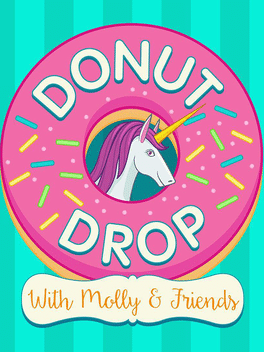Most Popular Game Boy Games - Page 282
-
Pichu Bros. Mini
2002
Pichu Bros. Mini
2002
Pichu Bros. Mini is a collection of several mini games, similar to Pokémon Party Mini. -
Jongbou
1987
Jongbou
1987
Jongbou is a combination of a Breakout-style arcade game and a Mahjong game. The player can either beat a level by removing all bricks from the screen or finish a valid Mahjong hand by collecting the falling bricks that turned to Mahjong pieces. In the original arcade version the player is rewarded with a picture of an anime-style girl in a sexy outfit after each level. These bonus pictures have been removed from the Nintendo Famicom version. -
Lunar Ball
1985
-
Mos Speedrun
2011
Mos Speedrun
2011
Jump, dodge and race Mos through 25 glorious stages of fast paced retro platforming action! With exceptionally clever level design, gorgeous pixellated graphics and solid platform dynamics you'll want to keep playing and playing. Find secret areas, collect the spooky hidden skulls, grab every coin, and, once you get fast, you can try to beat the speed-run time! There really is something for all skill levels, from casual to hard-core gamers. There are 12 cool costumes to unlock throughout the game, see if you can find every spooky ghost and you'll get a new costume for each one. And there's loads more! -
Doraemon: Taiketsu Himitsu Dougu!!
1991
Doraemon: Taiketsu Himitsu Dougu!! is a Game Boy action game on 1991. Doraemon rescues Nobita and others through a maze created by a time machine running amok. There are also shooters and bonus stages. -
Swinging Singles
1983
-
Maze Panic
2013
Maze Panic
2013
Save your princess in the japanese castle to find a ladder. You will see some traps in the castle,Take care!! -
Texting of the Bread
2010
Texting of the Bread
2010
Texting of the Bread is a typing horror game by Controlled Chaos Media and Screwattack. Use your texting abilities to defend the world against the gingerbread men onslaught. -
Corridor
2005
-
Hard Hat
1982
-
Jumpstart Spy Masters: Max Strikes Back
2001
JumpStart Spy Masters: Max Strikes Back is the second-half of the JumpStart Spy Masters series & the sequel to JumpStart Spy Masters: Unmask the Prankster. -
Helmet
1981
Helmet
1981
Helmet is a Game & Watch game that was released in 1981. In the game, you have to run from one house to the house across from it without getting hit by falling tools that your enemies is throwing at you. Sometimes the door on the other house will close, making you run around until it opens. -
Indian Battle
1980
Indian Battle
1980
The player takes control of a cowboy battling Native Americans. There are three types of enemies including the Indian footman, Indian on horseback and Buzzard. Arrow and tomahawk projectiles can also be shot for points. Enemies on the same plane such as scorpions cannot be shot and limit where the player can move the cowboy. Obstacles such as cacti and rocks block the cowboy's line of fire. One hit from an enemy or projectile takes a life away. The player is required to kill a set number of enemies to progress to the next level. -
Krakout Unlimited
Krakout Unlimited is a remake of Gremlin's popular game Krakout which itself was an Arkanoid-style Breakout clone. -
Retro
Eight arcade classics 3D-fied. Includes: Bounce 'n Break Bubble Puzzle Gobbler Hopper Laser Command Light Racer Roids Galaxy Warz -
Eggy
1984
Eggy
1984
EGGY is an action game that won the Excellence Award at Bothtec's first programming contest and was inspired by Choplifter. In this game players take the role of Ena, a robot which has to collect goods that are dropped from the sky with parachutes. The robot has a limited fuel supply that decreases with time and every time the robot takes damage from the enemies. The fuel supply can be replenished by saving humans that were transformed into killer cyborgs. The robot can only shoot diagonally after jumping and the location of the enemies, as well as the goods are indicated on a small map in the bottom. To complete each level, players need to collect a set amount of goods indicated at the top-right part of the screen. -
Max & Ruby: Grandma's Garden
2017
Grandma's garden needs a little work! Join Max and Ruby as they dig in to give Grandma a lending hand. You can plant seeds, water them, and even provide them with sunshine as you try and grow them into juicy berries and wholesome vegetables. And watch out for those pesky pests! Swat away critters in the garden so your crops stay healthy. When you're done, your favourite characters from the show will drop by for a snack. Try growing different crops to see which ones they like best! Features: + Grow your own garden by digging holes and planting seeds! + Keep away pesky spiders! + Give your garden a boost with water and sunshine! + Trade vegetables for rewards! -
Beat the Boss 3
2013
Beat the Boss 3
2013
Your dream has come true. All your life you have wanted to beat your boss, and now you finally can. With 50 million downloads to date, it is no secret that this is everybody’s favorite stress relief game. Your boss knows that you are playing this game, and there is nothing he can do about it. -
Donut Drop With Molly & Friends
2018
Oh no! Donuts are dropping out of nowhere and Molly and her friends need your help. Use your finger to drag Molly, Maximus, Rhonda, or Walter across the screen and collect ONLY the donuts shown at the top. You do not want to catch the wrong donut or it will be game over! -
Space Dance
2019
Space Dance
2019
Old-school twin-stick arcade shooter where enemies spawn to the beat of the music, made casual enough to fit into your lunch break. Easy to get going, challenging to finish, and nearly impossible to master the highscore.
